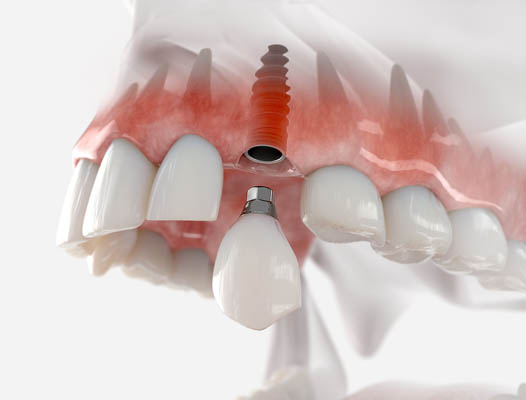Understanding the Dental Implant Process

Nearly 3 million people in the United States have a dental implant, and the number is projected to grow over the coming years. Due to their appearance, reliability, and functionality, more people are turning to implants over dentures and bridges. If you are thinking of getting dental implants, this article provides a guide on the tooth replacement process, so you know what to expect from the procedure.
Overview of the dental implant process
Dental implants involve the replacement of tooth roots with metal posts. These posts are screw-like and provide support for the artificial teeth. How the dentist completes the process depends on the number of missing teeth, the condition of the jawbone, and allergies. Patients may need to undergo multiple dental treatments so that the bone can fuse with the implant. The fusion and healing may take a while, but it is necessary in order to create a firm foundation for the new tooth.
Initial evaluation
The dentist will perform a comprehensive exam to ascertain the condition of the jawbone and the best method to use. The initial consultation typically includes x-rays, a dental health review, and taking impressions. The dental professional will discuss medical conditions and current medications. In some cases, patients may be given antibiotics before the procedure to prevent infection.
Placing the dental implant and bone grafting
If the jawbone is strong and has enough density, a bone graft procedure may not be necessary. The jawbone needs to be strong since a lot of pressure is generated when chewing, and the bone needs to be able to withstand that force and protect the implant. If extra bone material is needed to augment the jawbone, the bone material will come from another part of the body or from artificial sources.
The bone will need to heal after a bone graft before an implant can be placed. After the bone heals, the dentist will place the implant, and the bone will start to grow around it. The integration makes the implant a structural part of the jawbone. The healing process depends on the patient and may take between three to nine months.
Placing the abutment
When the implant is stable, the dentist will attach the abutment over the implant. This piece anchors the crown to the implant. This procedure is painless, although the dentist might apply local anesthesia to numb the area.
Sometimes, the abutment can be placed when the implant is inserted since it sits under the gum line. It will be visible until the crown goes over it. A healing cap will be attached to guide the healing process.
Adding the final tooth restoration
After the gums heal, the dentist will make the artificial tooth. The final crown can be screwed or cemented. If multiple teeth are missing, a bridge or denture will be used. If a removable option is used, patients will be able to remove the dental restoration for cleaning.
Ready to get a dental implant?
Replacing one or more missing teeth with dental implants is a major step. Talk to an experienced dentist to get answers to questions you might have about the procedure and to get a full overview.
Request an appointment here: https://www.dentistinridgewood.com or call Aston Dental at (201) 620-9996 for an appointment in our Ridgewood office.
Check out what others are saying about our dental services on Yelp: Dental Implants in Ridgewood, NJ.
Related Posts
Deep teeth cleaning, also known as scaling and root plaining is key to keeping your smile healthy and fighting gum disease. This procedure goes deeper than a regular cleaning by removing harmful bacteria and tartar under the gums, halting further damage and helping your gums heal. Prioritizing this procedure can help you avoid costly treatments…
Laser dentistry has been a popular method of dental care for the last several decades. Lasers are perceived as less painful and more effective than traditional dental treatment methods and can be used for a variety of procedures with a high degree of precision.With the use of lasers for dental procedures, patients experience less pain,…
Root canal treatment is often successful at repairing and saving an infected or severely damaged tooth. A crown can be used to restore your tooth after the procedure. But it needs to be put in place at the right time. Read on to learn more about when you should get a crown after a root…
TMJ disorder occurs when the temporomandibular joint is injured or overworked. The joint is responsible for connecting the skull and the jawbone, and it plays an important role in the jaw movement. When TMJ disorder develops, symptoms develop and can worsen without appropriate treatment. There are many different symptoms of TMJ disorder, but some TMJ symptoms…

